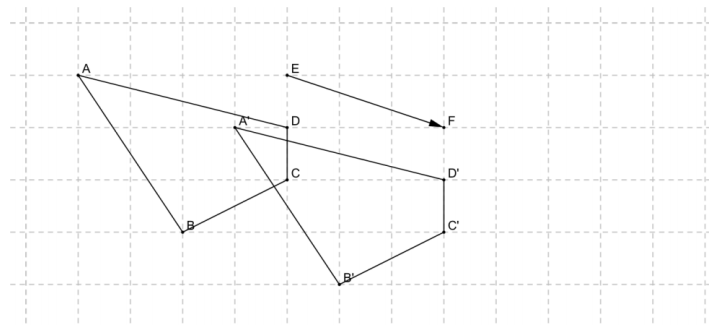Engage NY Eureka Math Geometry Module 1 Lesson 16 Answer Key
Eureka Math Geometry Module 1 Lesson 16 Example Answer Key
Example 1.
Draw the vector that defines each translation below.

Finding the vector is relatively straightforward. Applying a vector to translate a figure is more challenging. To translate a figure, we must construct parallel lines to the vector through the vertices of the original figure and then find the points on those parallel lines that are the same direction and distance away as given by the vector.
Example 2.
Use your compass and straightedge to apply \(\boldsymbol{T}_{\overrightarrow{A B}}\) to segment P1 P2.
Note: Use the steps from the Exploratory Challenge twice for this question, creating two lines parallel to \(\overrightarrow{A B}\): one through P1 and one through P2.
Answer:

Example 3.
Use your compass and straightedge to apply \(T_{\overrightarrow{A B}}\) to △P1 P2 P3.
Answer:

Relevant Vocabulary
PARALLEL: Two lines are parallel if they lie in the same plane and do not intersect. Two segments or rays are parallel if the lines containing them are parallel lines.
Eureka Math Geometry Module 1 Lesson 16 Exploratory Challenge Answer Key
Exploratory Challenge
In Lesson 4, you completed a construction exercise that resulted in a pair of parallel lines (Problem 1 from the Problem Set). Now we examine an alternate construction.
Construct the line parallel to a given line AB through a given point P.
1. Draw circle P: Center P, radius AB.
2. Draw circle B: Center B, radius AP.
3. Label the intersection of circle P and circle B as Q.
4. Draw \(\overleftrightarrow{\boldsymbol{P O}}\).
Note: Circles P and B intersect in two locations. Pick the intersection Q so that points A and Q are in opposite half-planes of line PB.

The construction shows that m∠ABP and m∠QPB are equal, alternate interior angles. Hence, by the alternate interior angles converse, \(\overleftrightarrow{\boldsymbol{P O}}\) || \(\overleftrightarrow{\boldsymbol{A B}}\).
Discussion
To perform a translation, we need to use the previous construction. Let us investigate the definition of translation.
For vector \(\overrightarrow{A B}\), the translation along \(\overrightarrow{A B}\) is the transformation \(T_{\overrightarrow{A B}}\) of the plane defined as follows:
1. For any point P on the line AB, \(T_{\overrightarrow{A B}}\)(P) is the point Q on \(\overleftrightarrow{\boldsymbol{A B}}\) so that \(\overleftrightarrow{\boldsymbol{P Q}}\) has the same length and the same direction as \(\overrightarrow{A B}\), and
2. For any point P not on \(\overleftrightarrow{\boldsymbol{A B}}\), \(T_{\overrightarrow{A B}}\)(P) is the point Q obtained as follows. Let l be the line passing through P and parallel to \(\). Let m be the line passing through B and parallel to line AP. The point Q is the intersection of l and m.
Note: The parallel line construction on the previous page shows a quick way to find the point Q in part 2 of the definition of translation.
In the figure to the right, quadrilateral ABCD has been translated the length and direction of vector \(\overrightarrow{C C}^{\prime}\). Notice that the distance and direction from each vertex to its corresponding vertex on the image are identical to that of \(\overrightarrow{C C}^{\prime}\).

Eureka Math Geometry Module 1 Lesson 16 Problem Set Answer Key
Translate each figure according to the instructions provided.
Question 1.
2 units down and 3 units left
Draw the vector that defines the translation.
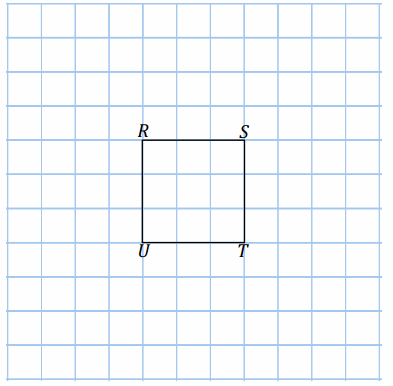
Answer:

Question 2.
1 unit up and 2 units right
Draw the vector that defines the translation.
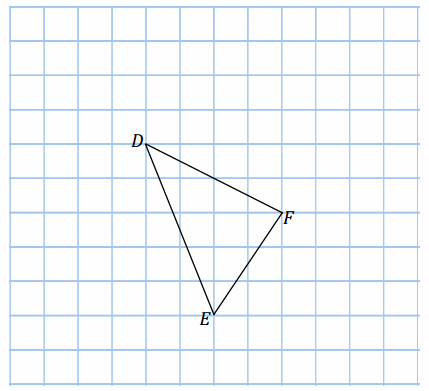
Answer:
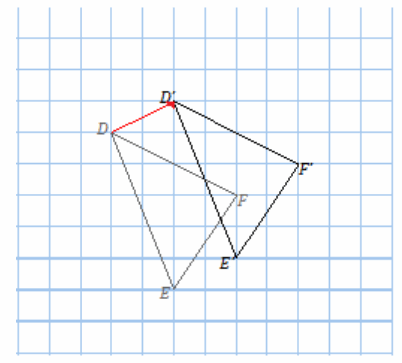
Question 3.
Use your compass and straightedge to apply \(T_{\overrightarrow{A B}}\) to the circle below (center P1, radius (\(\overline{\boldsymbol{P}_{1} P_{2}}\))).
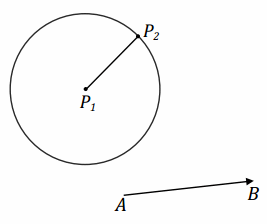
Answer:
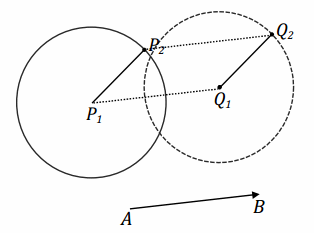
To translate the circle is to translate its radius.
Question 4.
Use your compass and straightedge to apply \(T_{\overrightarrow{A B}}\) to the circle below.
Hint: You need to first find the center of the circle. You can use what you learned in Lesson 4 to do this.
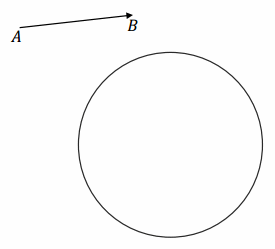
Answer:
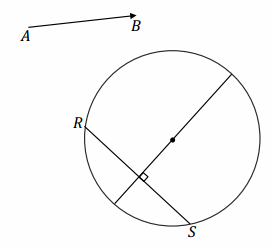
→ To find the center of the circle (and thereby also the radius of the circle), draw any chord within the circle. Construct the perpendicular bisector of the chord, and mark the diameter of the circle, which contains the center of the circle. Finally, use a perpendicular bisector to find the midpoint of the diameter.
→ Once the center has been established, the problem is similar to Problem 3.
Two classic toothpick puzzles appear below. Solve each puzzle.
Question 5.
Each segment on the fish represents a toothpick. Move (translate) exactly three toothpicks and the eye to make the fish swim in the opposite direction. Show the translation vectors needed to move each of the three toothpicks and the eye.
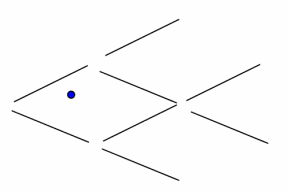
Answer:
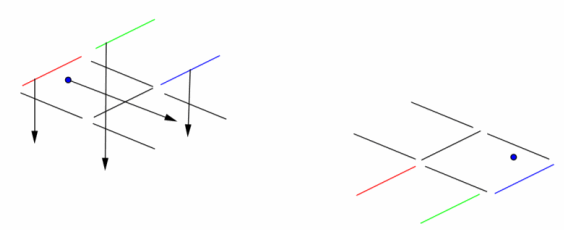
Question 6.
Again, each segment represents a single toothpick. Move (translate) exactly three toothpicks to make the triangle point downward. Show the translation vectors needed to move each of the three toothpicks.

Answer:
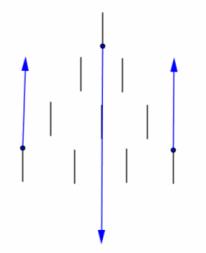
Question 7.
Apply \(T_{\overline{G H}}\) to translate △ABC.
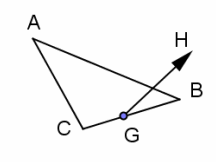
Answer:
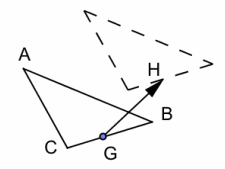
Eureka Math Geometry Module 1 Lesson 16 Exit Ticket Answer Key
Translate the figure one unit down and three units right. Draw the vector that defines the translation.
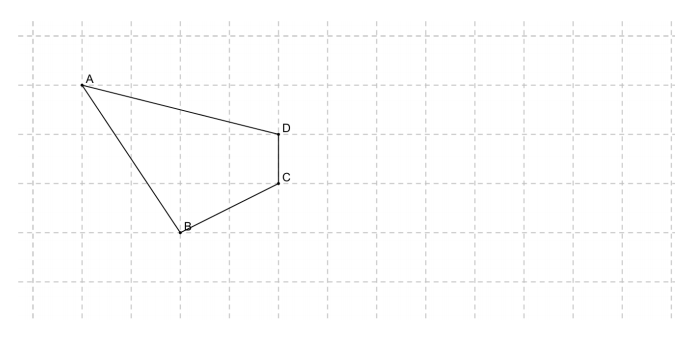
Answer:
